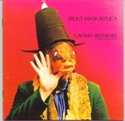|
Jonny 290 posted:Yes! as noted just above. Super long wires get finicky and shoot most of their energy off their ends. Since the local net I want to get on is 28.480, I'd be shooting for a 16.4'.. which I'm guessing would be 8.2' on each side? That seems easy enough to put together. Sorry if I'm miring things down in what's probably obvious or easy. It doesn't seem like the people I know locally really know much about it either, strangely enough (ie, told me an HF unit is a good 'beginner radio,' neglected to mention you need general license to actually transmit on it). TremorX fucked around with this message at 19:07 on Aug 14, 2012 |
|
|
|

|
| # ? May 26, 2024 12:32 |
|
Pukestain Pal posted:Awesome, thanks! I think I'd really like playing with packet radio in some form, which would be the main reason I'd want fixed base. Packet's great because you do not need to look at the radio AT ALL after you set it up. What you can do is, buy an entry level 2 meter or dual band radio. If you cotton to it and are ready to invest more, you can grab a nicer radio and move your first radio to dedicated 24/7 packet duty. TremorX posted:Since the local net I want to get on is 28.480, I'd be shooting for a 16.4'.. which I'm guessing would be 8.2' on each side? That seems easy enough to put together. Yup. Cut two wires to a few inches longer than that, wire one side to the center conductor of your coax and the other to the shield. This is just electrical connection; you'll have to rig something up to make sure that the wires and coax stay physically connected and that everything's weatherproofed. Then string it up - if you want to try an inverted V (probably the easiest to goof with), tie a rope to the dipole center and hoist it up, then use ropes to pull the elements out in an inverted V. About 120 degrees included angle is fine, you can experiment with it though. Trim your wires until your lowest SWR is around 28.4. If you're like me, you'll always overshoot the last cut, so that should leave you bang on.  Also, on your last point - fogies can be weird like that. Sometimes hams cargo-cult stuff like the CB guys, and talk about their ESS DOUBLE YEW ARRS and stuff like that. It's unfortunate, but usually those guys are old enough that there's no teachin' them, so all you can do is chuckle and move on.
|
|
|
|
I'd always assumed that SWR was strictly for transmitting, not receiving. I just thought antennae were passive when receiving and used to avoid interference from the surroundings. Once I got into this stuff, I kind of understood it as "needs to be at least half the size of the wavelength you're trying to pick up," which boggled my mind since I was getting good reception on 10m last fall with what amounted to a 2' coathanger hooked to some coax. I haven't tried transmitting (other than on CB frequencies) and I haven't messed with an SWR meter at all, yet. I'm probably going all about this the wrong way. Is there a good beginner's guide on understanding antenna tech?
|
|
|
|
Finally got my call sign! And .... The FCC misspelled my name and address. They spelled MARTIN as MARTLH. Go government...
|
|
|
|
TremorX posted:I'd always assumed that SWR was strictly for transmitting, not receiving. A simple wire, dipole or vertical for reception only does not need to be tuned, unless your radio lacks gain and volume control. Though tuning a simple receiving antenna does increase the current that makes it from the air to the receiver, it also makes the noise louder, so your signal-to-noise ratio does not improve. In more complex antennas like Yagi-Uda or loop designs, length and tuning DOES become important for reception too. Most (not all) antennas are reciprocal; that means that a good transmission antenna is a good reception antenna too. So if you have a shortened antenna, for example a vertical with a coil at the bottom, you'd tune it up by turning a knob or moving a tap to make the noise as loud as possible. It doesn't help your reception - since you've also amplified the noise - but it has made your antenna resonant so that the SWR is good. The coil will, however, dissipate some of your energy, and won't help pick up current from the air, so a coil-shortened antenna is not as good as a full size one. Sometimes you need that coil though - a full size 20 meter vertical antenna for vehicle mobile operation would be no-go; it would touch power lines, trees, bridges and road signs. TremorX posted:I kind of understood it as "needs to be at least half the size of the wavelength you're trying to pick up," Long wire antennas can be good antennas; a very long receive-only design called a Beverage antenna is good for picking up signals from a particular direction, and rejecting noise in other directions. It requires a lot of real estate though. Loops and yagis, which can be made both by suspending wires next to each other, or made out of tubular aluminium, are good for directivity. Obviously the lobes with gain in them help both transmission and reception, but often having sharp nulls is good too; a null can be used to get rid of a source of interference, or for direction finding. TremorX posted:which boggled my mind since I was getting good reception on 10m last fall with what amounted to a 2' coathanger hooked to some coax. TremorX posted:Is there a good beginner's guide on understanding antenna tech? For beginners: http://www.arrl.org/your-first-antenna Here's a theoretical site: http://www.antenna-theory.com/antennas/main.php There's a bit of math, but you can skip that if you want. Check out the half-wave dipole, the monopole and the Yagi-Uda for starters. Vir fucked around with this message at 14:14 on Aug 15, 2012 |
|
|
|
chrisgt posted:Finally got my call sign! And .... The FCC misspelled my name and address. They spelled MARTIN as MARTLH. Go government... Pretty sure the FCC requires that Volunteer Exam Coordinator organizations submit their data electronically, so the typo was either from your local VE team or someone at the VEC typing it in off your form. You can fix your address via the ULS system, not sure about name though.
|
|
|
|
What is the general opinion on the Yaesu VX-8GR? It looks like it'd be a good starter HT for me, plus gives me the opportunity to play with APRS. Looks like I can pick up a new one for 370 locally.
|
|
|
|
fordan posted:Pretty sure the FCC requires that Volunteer Exam Coordinator organizations submit their data electronically, so the typo was either from your local VE team or someone at the VEC typing it in off your form. I called up tech support. Didn't wait on hold, and I talked to a very helpful person who spoke english. Walked me through getting a password on the ULS, and from there it's a fairly intuitive system. Within a few minutes I had submitted an online application for the name and address change. All in all, a very easy process and user friendly system. I'm impressed with their tech support.
|
|
|
|
Finally, mine showed up just a few minutes ago! KK4LCY.
|
|
|
|
TremorX posted:Finally, mine showed up just a few minutes ago! KK4LCY. 'grats on passing your tech!
|
|
|
|
TremorX posted:Finally, mine showed up just a few minutes ago! KK4LCY. Woohoo!
|
|
|
|
Pukestain Pal posted:What is the general opinion on the Yaesu VX-8GR? It looks like it'd be a good starter HT for me, plus gives me the opportunity to play with APRS. Looks like I can pick up a new one for 370 locally.
|
|
|
|
If I recall correctly(?), having the GR's built in GPS sacrifices some other functionality compared to a regular 8R with GPS.
|
|
|
|
Vir posted:If I recall correctly(?), having the GR's built in GPS sacrifices some other functionality compared to a regular 8R with GPS. Are you sure it's not the other way around? From what I can tell, if you use the external gps you can only do aprs on band b, instead of either. Would be interested to know if there are any other differences though.
|
|
|
|
Vir posted:If I recall correctly(?), having the GR's built in GPS sacrifices some other functionality compared to a regular 8R with GPS. This is correct. The biggest thing for many people is probably that the VX-8R supports 6m (AM+FM), 2m, 1.25m, and 70cm. The VX-8GR is 2m/70cm only.
|
|
|
|
wolrah posted:This is correct. The biggest thing for many people is probably that the VX-8R supports 6m (AM+FM), 2m, 1.25m, and 70cm. The VX-8GR is 2m/70cm only. Hmmm. That's a pretty big difference...although I can't imagine I'd be using much out of 2m...at least for the foreseeable future. If I go beyond, I'll probably have my general and be looking at HF rigs.
|
|
|
|
Just passed my Technician and General exams today! The thread title is dead on; all the VECs were 60+ years old and spent the entire time discussing their various colonoscopies and neurological exams. Nevertheless, they were friendly and encouraging. I just need to find an inexpensive HT once my name shows up in the FCC database.
|
|
|
|
Welcome to all the new Hams!!! I am still new myself, licensed in February. Well we went out today on the bikes, brought along some HF gear... I am Steve, VA6SMB, behind the camera. Video is boring but check out my portable HF setup (in the first few minutes). And go to 5:55 to see it setup. https://www.youtube.com/watch?v=qVmVmlCbqvA SiB fucked around with this message at 07:22 on Aug 19, 2012 |
|
|
|
nobody- posted:Just passed my Technician and General exams today! The thread title is dead on; all the VECs were 60+ years old and spent the entire time discussing their various colonoscopies and neurological exams. Nevertheless, they were friendly and encouraging. I just need to find an inexpensive HT once my name shows up in the FCC database. Contrary to what the hams at the VE testing may have said, you can purchase a radio without a valid license. Also, congratulations on your tickets!
|
|
|
|
nobody- posted:Just passed my Technician and General exams today! The thread title is dead on; all the VECs were 60+ years old and spent the entire time discussing their various colonoscopies and neurological exams. Nevertheless, they were friendly and encouraging. I just need to find an inexpensive HT once my name shows up in the FCC database. I just attended my first meeting of my local amateur radio group; I was the youngest person there by a half century. Definitely going back because they were really nice even though I kept having to speak louder.
|
|
|
|
Haha, I was walking out the building Friday and heard two of the other hams in the building going on about making sure people they sold radios to had licenses and all that. They were saying that they literally look them up on their phones right there. Some guys are really uptight about that.
|
|
|
|
Jonny 290 posted:Haha, I was walking out the building Friday and heard two of the other hams in the building going on about making sure people they sold radios to had licenses and all that. They were saying that they literally look them up on their phones right there. Some guys are really uptight about that. I think it makes sense to require a license though. It's a piece of equipment that you can't legally really use without one. Then again, that just makes the whole process of buying equipment (even second hand) that much more difficult. I know hamradio.com asks for your callsign when you buy something...but I'm not sure that they actually look it up or anything.
|
|
|
|
I get what they're driving at, but I just think it's funny. Oh, yeah! I forgot! We had a temperature inversion and a VHF band opening this morning. Couple of guys were talking on the local 2M repeater about how they thought they heard another repeater ID. The weather was right for it, so I popped on the weather band on the Icom and lo and behold, the band was wide open. I got full strength copy on weather channels on every single channel, including one that's over 90 miles away (this is on a Diamond mobile). Wish I was at home and had a sideband antenna up right now!
|
|
|
|
While type-approved amateur radios can be bought without a license in the US, I can understand why some dealers would like to only sell to licensed people. There is something you can't buy without a license though, and that's non-type-approved equipment. For example, there are some high-performance amplifiers (more than 15 dB gain) that can only be marketed and sold to licensed amateurs.
|
|
|
|
Pukestain Pal posted:I think it makes sense to require a license though. It's a piece of equipment that you can't legally really use without one. Then again, that just makes the whole process of buying equipment (even second hand) that much more difficult. I know hamradio.com asks for your callsign when you buy something...but I'm not sure that they actually look it up or anything. It's true that you can't legally use the radio without a license, but the one thing you can do is listen and learn. I got a lot of use out of my radio pre-license just listening and taking notes. I can see requesting a license if the buyer is kind of shifty or you think they're going to use the poo poo illegally, like the guys I used to refuse to sell poo poo to at RadioShack since I knew they were just going to mod the amplifiers to use on CB.
|
|
|
|
First radio came today! Got a Yaesu VX-8GR. Looking forward to getting my first contact tonight.
|
|
|
|
I recently got back from vacation at my family cabin, It's been in the family for over 50 years and there is plenty of neat old stuff there. I saw this and decided to take it home. It is my grandfather's Drake SPR-4 Receiver with the manual. I had no idea until I asked my mom that he used to have a whole setup when they lived in Denver. I would like to get it working but I am very new to the world of amateur radio and I'm having difficulty making sense of antennas. Is there really no small indoor antenna that I can use?  When I was in the garage the other day I ended up finding my dad's old Realistic TRC-209 CB radio. 
|
|
|
|
Well I got APRS working last night (I have a few ideas for it). So I decided to drive with it sending a beacon every couple minutes. The results are here: http://aprs.fi/info/?call=KB3ZBQ-7 After about 1.5 hours I only see it registered once. I'm guessing it's because I was using a HT inside of the car. I'm also guessing an external antenna would help a lot.
|
|
|
|
Llyr posted:I recently got back from vacation at my family cabin, It's been in the family for over 50 years and there is plenty of neat old stuff there. I saw this and decided to take it home. It is my grandfather's Drake SPR-4 Receiver with the manual. I had no idea until I asked my mom that he used to have a whole setup when they lived in Denver. I would like to get it working but I am very new to the world of amateur radio and I'm having difficulty making sense of antennas. Is there really no small indoor antenna that I can use? That is a beautiful radio. Congrats. I'll echo my advice that I've told all the people that have shown up in this thread with old radios - don't let a wheeler and dealer talk you into selling that for $50. It's in amazing condition and if it works is worth a lot more - but of course, it has sentimental value so I don't expect you'll sell it. Antennas are easy. Great antennas are hard to pull off. You can get started by taking a few feet of wire (say 10-30 feet) and stringing it up around the room as high as you can get it. Connect that single wire to the center pin of the antenna jack. If I recall those old Drakes had RCA antenna jacks, so it would go in there. See what you can pick up!
|
|
|
|
Pukestain Pal posted:Well I got APRS working last night (I have a few ideas for it). So I decided to drive with it sending a beacon every couple minutes. External antenna will help. More than 5W will help as well. What was your path, WIDE1-1,WIDE2-2? I sometimes take my APRS HT with me in the car and sometimes in the plane, and I always forget to reset my path when I get in the car and end up with crappy propagation. I will say rubber ducky antennas work just fine at 8500ft. 
|
|
|
|
fordan posted:External antenna will help. More than 5W will help as well. What was your path, WIDE1-1,WIDE2-2? I'll have to doublecheck the path. Is WIDE1-1,WIDE2-2 the way to go? EDIT: yup, looks like that's what I am set at. EDIT2: Transmit delay is set to 200ms, and from what I read that might be entirely too low. I will up it to 500ms and see if that makes a difference. vxsarin fucked around with this message at 18:16 on Aug 22, 2012 |
|
|
|
Llyr, length isn't as critical for reception as for transmission, so a random wire could work fine. Depends on how much noise is in your environment. There are some loop reception antennas available for shortwave radios, and I hear some people like them, since they help tune away noise. For example, the Degen DE31 (Kaito KA31) active loop, or the Kaito AN-200 passive magnetic loop. Drake sold a loop too, called the AL-4, shown in this sexy picture, but it's easy to make a replica yourself. I think the Kaito antennas work better. By the way   If you want to listen to hams in the Caribbean give weather and damage reports from Isaac to the National Hurricane Center, you can listen to the live stream at http://www.hwn.org/ when it activates. Vir fucked around with this message at 18:46 on Aug 22, 2012 |
|
|
|
While we're on the topic of antennas... I've been using SDR# with one of those DVB-T dongles and a set of rabbit ears to scan through the airwaves and learn what's out there before I buy a transceiver. This setup does an OK job picking up stuff in the 450MHz range -- taxi and bus communications, powerline technicians, a couple local repeaters, as well as stuff in the 850 MHz range like police radio and trunking signals. It really, really sucks at 2 meter-range stuff, though. I see basically no signals at all in this range. I built a J-pole antenna out of 300 ohm twin lead per the instructions here http://www.qsl.net/wb3gck/jpole.htm and I still don't see any signals, even though I know there are several 2 meter repeaters in my town. How critical is impedance matching for something like this? The DVB-T dongles are designed for 75 ohm input impedance, whereas that antenna was designed to be connected to 50 ohm coax. I have about 5 feet of 75 ohm cable TV coax soldered to the antenna's feedpoint that I run directly into the dongle. Could this cause huge losses? Should I try some other sort of antenna design such as dipole or yagi?
|
|
|
|
Have you tried taking the antenna outside and waving it around a bit? I'm lucky enough to live quite close to one 2 meter repeater that I can hear inside the house, but the other one I need to bring the antenna outside to hear. What is the frequency range of your dongle?
|
|
|
|
nobody- posted:While we're on the topic of antennas... See how the weather band looks. Tune between 162.4 and 162.55 MHz and see; you should have at least one narrow band FM station broadcasting automated weather.
|
|
|
|
Ah! Taking it outside helped. I stupidly thought I'd be able to get signal with the antenna indoors. Turns out there's not much activity around here, though I do hear the repeater station IDs loud and clear. The dongle will tune from ~60 MHz up to 1.7 GHz, though there are some scattered dead spots within this range. I also built an HF upconverter for it which works ok. I've been able to pick up some assorted shortwave stations and 40 meter CW transmissions with a long wire antenna, though I haven't been able to pick up much in the 10-50MHz range yet. Hopefully with a better antenna and filtering I'll be able to receive more transmissions.
|
|
|
|
The old standby is WWV. Depending on your location, you should hear signals at 5, 10, or 15 MHz exactly. You can use this to calibrate your converter if needed. You should be able to hear local CB traffic if there is any. 26.965 to 27.405, AM. Channel 19 is 27.185. Could you share a link or some info for the HF upconverter? Sounds great!
|
|
|
|
  Isaac is starting to affect land in the gulf. It's only a Cat 1 on the Saffir-Simpson wind speed scale, but it's a wide-diameter hurricane so it rates 4.1 for surge and 2.2 for wind energy on the new Integrated Kinetic Energy scale which goes from 0 to 6. There are live streams of the Hurricane Watch Net from New York: http://14300stream.homeip.net:88/broadwave.asx?src=1&rate=0 Minnesota: http://kc0yhm.ham-radio-op.net/broadwave.asx?src=1&kbps=32 where you can hear damage reports, weather reports, etc. being called in by amateur radio operators. The streams only work during the event. Check out http://www.websdr.org/ for alternative reception sites. The most relevant frequency is near 14.325 MHz. If you tune around on the 80, 40 and 20 meter bands you might also hear ARES, SATERN and other groups passing traffic for government and NGOs if it turns into a communications disaster. Vir fucked around with this message at 22:43 on Aug 28, 2012 |
|
|
|
Vir posted:There are live streams of the Hurricane Watch Net from
|
|
|
|

|
| # ? May 26, 2024 12:32 |
|
The HWN net has moved to 7.268 as of 11:00EST. This is all incredibly interesting to listen to, since I've never heard an emergency net in action before.
|
|
|

















